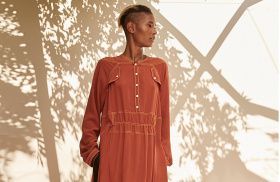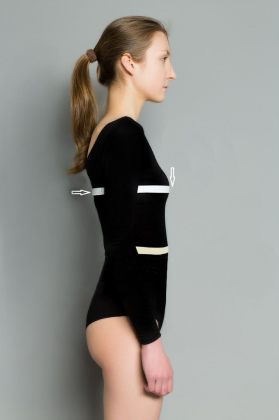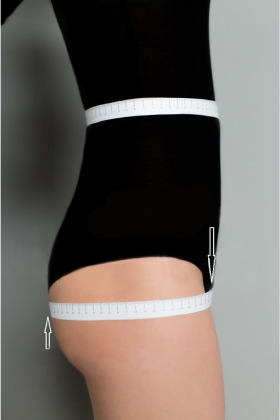Types of knit fabrics: how to choose the right knit fabric for your garment
A knit fabric is a textile formed by intermeshing the loops. That is the main difference of the knit from woven fabrics, which are created by interlacing two sets of perpendicular threads, i.e. the woven fabric is produced by weaving and the knit fabric - by knitting.
The density of knit fabric varies and the fabric’s elasticity depends on that. The knit fabrics may be manufactured of natural or synthetic fibres, pure or blended. Elastane is often added to make the knitted fabric more bouncy, durable and to keep the fabric’s shape and condition for longer.
Three types of knit fabric
Knit fabrics made of natural fibre fall into three categories by their quality: premium, ring-spun and open-end.
Premium knit is the knitted fabric of the highest quality, produced with the longest fibre (35 - 70 mm). In result premium knit keeps its original shape longer, it is easy to wash and the garment’s seams do not twist after washing.
Ring-spun knit is the second highest quality material. It is manufactured with medium-long fibre (25-35 mm). It is a good quality knit, however, its surface will not remain as smooth and silky as one of the premium knit.
Open-end knit is the least expensive material. It is produced by using the shortest fibre (20-25mm), that is why it develops some fuzz on its surface. These fabrics have high shrinkage, form pills on the surface and the garments sewn out of them stretch and get deformed quickly.
Types of knitted fabrics
The range of knit fabrics is so wide that it may confuse you. We are going to list the most common of them and to explain their differences and types of garments they are used for.
Single jersey is a knit fabric with flat loops or columns on the right side and with long horizontal loops on the wrong side like if it was knitted with needles. The fabric stretches well in width with nearly no stretch in length. It is used for underwear and childrenswear.
Interlock or double jersey has knitted columns on the right and on the wrong rides. Same as the single jersey, double jersey is used for underwear and childrenswear, however, the double jersey is more durable and does not curl while being cut in contrast to the single jersey.
Terry is a fabric with a face similar to jersey and looped or brushed back. There is two-thread terry and three-thread terry. The weight of the fabric varies from 190 gsm to 460 gsm. Terry is used for making track suits, sweatshirts, hoodies and pullovers.

Terry suites made by using GRASSER patterns. Sweatshirt #876 and pants #877
Rib knit or ribbing – are knitted elastics with textured knitted columns. Single rib is a 1x1 rib which has a sequence of one loop and one purl stitch. Double,2x2, rib and triple, 3x3, rib have wider knitted columns. Double and triple rib is thicker and more durable than single rib, meanwhile single rib is a softer fabric, that is why it is used for producing underwear, childrenswear, including newborn babies clothing.
Rib knit suits perfectly for making cuffs and neckbands and it is often combined with other knit fabrics, for example, with terry, which is not a very stretchy material.

Neckline, finished with double rib, in the dress sewn by using the pattern #873
Pique is textured squares or cells on its surface. It is commonly used for producing
Polo shirts, as well as for sportswear and for childrenswear.
Ponte knit is a thick knit fabric that originally comes from the Channel Island of Jersey. Initially it was knitted from the local sheep wool and it was used for underwear. Nowadays ponte knit is made out of various types of fibre and its weight varies. It is widely used: lightweight silky ponte is used for lingerie, heavyweight one for outdoor clothing such as coats or jackets. The fabric is practically wrinkle-free, soft and easily draping. It stretches in width and practically doesn’t stretch in length.

Dress made of ponte knit by using pattern 903
Biflex is a synthetic knit fabric with 4-way stretch and bounces back thanks to a generous amount of lycra in its composition. The fabric is resistant and durable, easily dyed in bright colours and keeps its colours for a long time, it doesn’t fade on the sun, quickly dries and doesn’t run the colour. It is most commonly used for producing sportswear, performance outfits and swimwear.

Swimwear biflex fabric from GRASSER SHOP
Fleece is a synthetic knit fabric made of polyester whose thermal characteristics are equal to the sheep wool (named after sheep fleece). This fabric is light, comfortable, warm, with a thick nap on one or both sides, covering the fabric structure. The fabric does not absorb the water, keeping it on the surface. It is easy to maintain, quickly-drying and keeps warmth even when wet. Fleece is used for producing sportswear and outerwear: jackets, hats, trousers, sweaters and thermals. The downside of the fabric is that fleece attracts dust and generates static electricity.

Fleece from GRASSER SHOP
Jacquard knit is a fabric with a textured pattern, resulting from using threads of different colour and texture. The patterns vary from tiny to large.
Loden knit is quite heavyweight textile made of sheep wool, sometimes with some additives. It is easy to recognize: it looks more like a felt rather than a fabric. The knitted loops are barely seen on the right side. Loden may be double-sided, boucle and may have a short nap on its surface. This fabric keeps warmth well and it is air-proof, draping, bouncy and easy to work with.
Velour, velvet and fur may also have a knitted reverse and be stretchy. The face is with a flat or standing nap. It is important to mind the nap direction while cutting and to place the pattern pieces in the same direction.

Fur costume with knitted background sewn using the patterns 816 and 877
Nowadays knit is a very versatile textile: it is used from underwear to outerwear. The quality of the completed garment depends significantly on the right material selection. If you sew by using ready-to-sew patterns, please, pay attention to the pattern maker’s fabric recommendations. If you draft your own patterns, consider the ease and choose the fabric with the right stretch.
All GRASSER knitwear patterns are collected in one section.


















